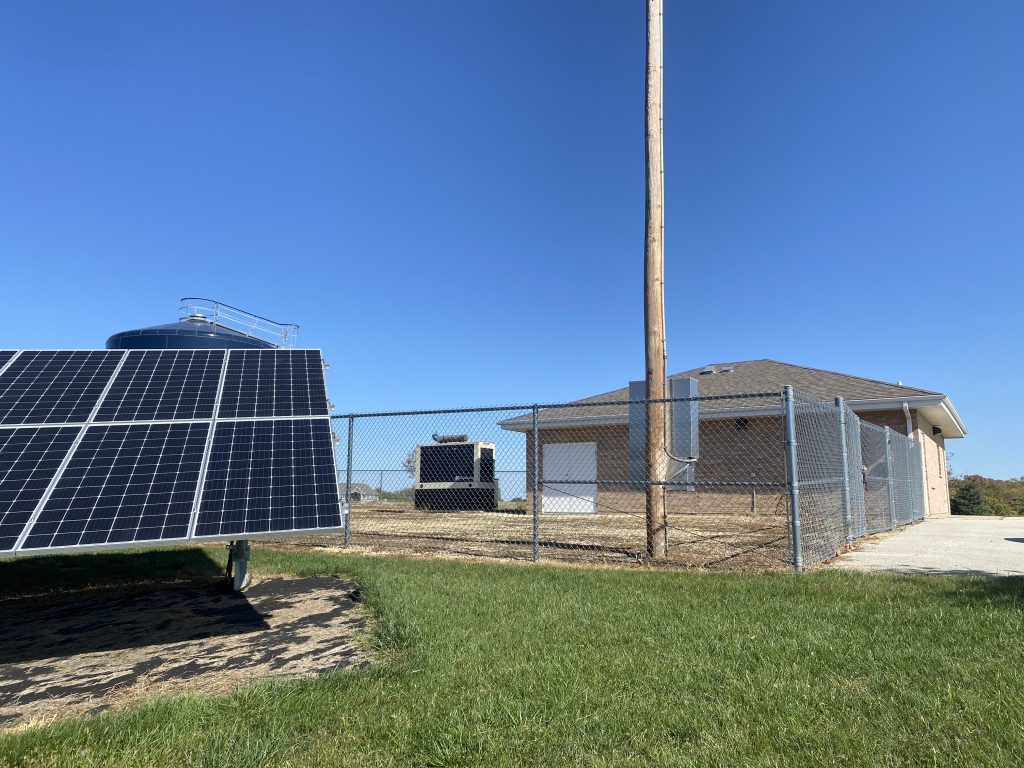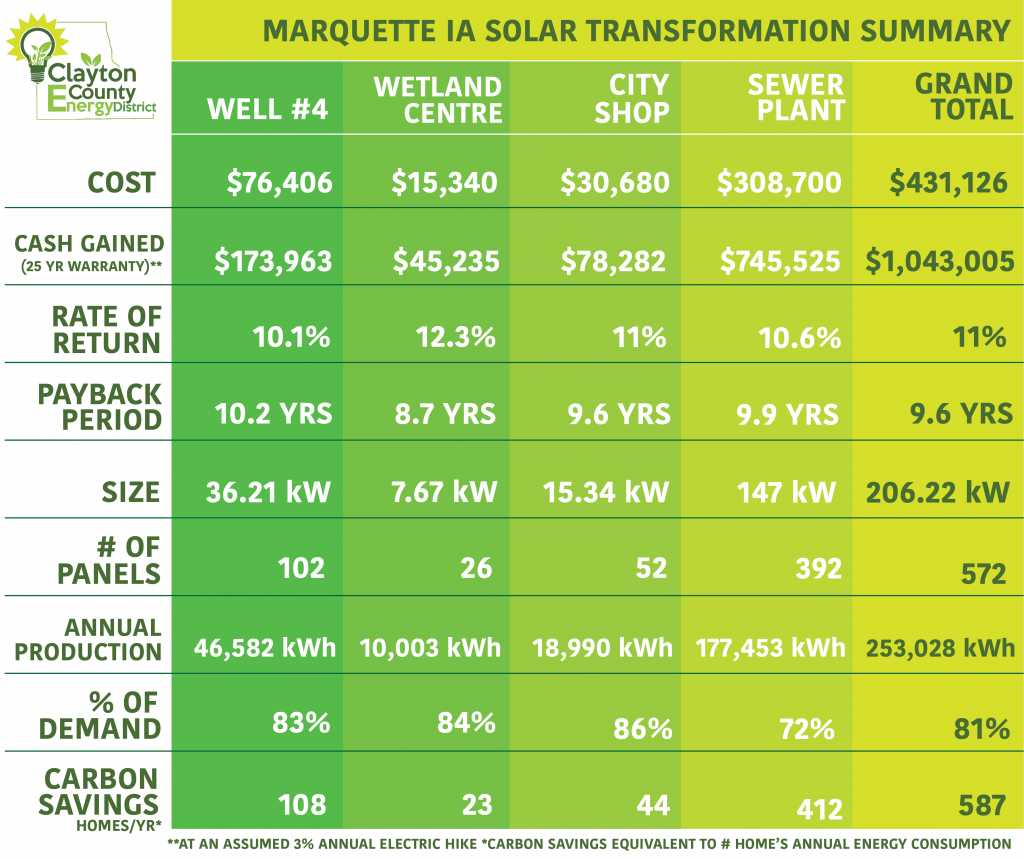 On February 25, 2021, State Auditor Rob Sand released a financial impacts review of public entity solar energy installations. The State auditor report found public solar energy projects are saving taxpayer’s funds. If each county, each county seat, and each school district created a solar installation the same average size as the current 80 communities in our state with public solar projects, Iowa taxpayers could realize a savings of $375 million. And the Clean Energy Districts of Iowa are willing to wager that this is a very conservative savings estimate.
On February 25, 2021, State Auditor Rob Sand released a financial impacts review of public entity solar energy installations. The State auditor report found public solar energy projects are saving taxpayer’s funds. If each county, each county seat, and each school district created a solar installation the same average size as the current 80 communities in our state with public solar projects, Iowa taxpayers could realize a savings of $375 million. And the Clean Energy Districts of Iowa are willing to wager that this is a very conservative savings estimate.
These 80 communities are spread throughout the state, and some of these solar arrays produce annual savings as high as $80,000. The average annual savings was more than $26,475, and the average savings over the lifetime of the installation was $716,437. These savings amounts are transforming energy expenses and creating job opportunities. For example, a solar-powered school building could save $80,000 in energy costs, and those dollars could be used to cover the cost of a teaching position and could provide the capacity to keep the school open. This is a “win-win” and “green meets green” opportunity as communities are saving dollars, along with lowering their carbon footprint dramatically. Spending less on energy allows public entities to focus on their mission.
Review Full Report Here: IowaSolarReport_55192DA30BB49
Clayton County’s, Marquette, Iowa, has realized this kind of significant savings.
[col2 ] [/col2][col2 ]
[/col2][col2 ] [/col2]
[/col2]
In 2018, the Clayton County Energy District hosted a “Solar for Non-Taxable Entities” Workshop, which inspired workshop attendee Marquette City Clerk Bonnie Basemann to bring solar energy to their city. The city now has four solar-powered locations, Well #4 (their city water treatment facility), the Driftless Area Wetland Centre, their city chop/police station, and their sewer plant. Altogether, the city has invested $430,000 in solar projects with an average expected return rate of 11%. The projected cash gain over the 25-year warranty, at a conservatively assumed 3% annual electric rate hike, is over $1 million.

Marquette had the capacity to purchase their solar outright, but there are certainly other options for investment. Other close communities, such as West Union, Iowa, chose to join in a Power Purchase Agreement which is “a financial arrangement in which a third-party developer owns, operates, and maintains the photovoltaic (PV) system, and a host customer agrees to site the system on its property and purchases the system’s electric output from the solar services provider for a predetermined period. This financial agreement allows the host customer to receive stable and often low-cost electricity, while the solar services or another party acquires valuable beneficial benefits, such as tax credits and income generated from the sale of electricity.” [source: EPA (the United States Environmental Protection Agency)]
West Union and Marquette, Iowa, demonstrate solar purchasing options: Power Purchase Agreement vs. purchasing outright.
